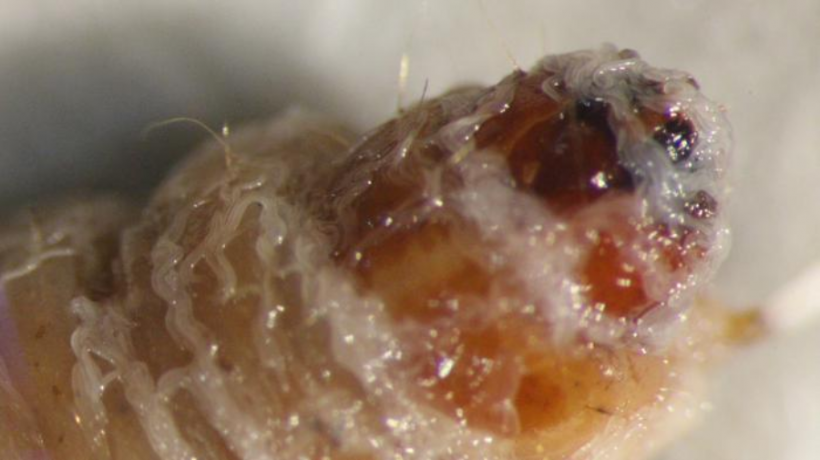Scientists at UC Riverside have unveiled a new weapon in the fight against crop pests: a tiny nematode species capable of infecting and eliminating insects.
Named Steinernema adamsi after American biologist Byron Adams, this tiny worm holds the key to eco-friendly pest control in warm, humid regions where traditional methods falter.

Worms in Pest Management
Nematodes are not new to the scene of pest management. For decades, species within the Steinernema genus have been deployed in agriculture to combat insect parasites, offering a pesticide-free alternative. However, the discovery of Steinernema adamsi marks a significant advancement in this field.
Professor Adler Dillman, head of the nematology lab at UC Riverside, explains, "We spray trillions of them on crops every year, and they're easy to buy." Despite the availability of over 100 Steinernema species, researchers are continually seeking new variants with unique capabilities suited for specific climates and insect species.
The discovery of Steinernema adamsi began with an unexpected turn of events. Dillman's team initially sought to study a different Steinernema species but received samples from colleagues in Thailand. Through DNA analysis, they unearthed a novel nematode species, distinct from any previously described.
The researchers shed light on the worm's remarkable attributes in the Journal of Parasitology. Steinernema adamsi is so small that several thousand individuals in a flask resemble nothing more than dusty water. Yet, despite their size, these nematodes pack a powerful punch against their insect hosts.
Read Also: This New Snake-Like Robot 3D Prints Its Own Body to Grow Longer
How the Worm Eliminates Pests
Intriguingly, Steinernema adamsi employs a sinister yet effective strategy for eliminating its prey. As juveniles, they lie dormant in the soil until they encounter a suitable host.
Upon infection, they unleash pathogenic bacteria, swiftly incapacitating the insect within 48 hours. The host's body becomes a breeding ground for the nematodes, facilitating their rapid multiplication.
Laboratory experiments validated the nematode's effectiveness in combating pests. Even at low concentrations, Steinernema adamsi proved lethal to wax moths within a mere two days. Such efficacy bodes well for its potential application in agriculture, offering a sustainable alternative to chemical pesticides.
Looking ahead, researchers aim to unravel Steinernema adamsi's resilience to environmental stressors and its range of insect targets. Despite the lingering questions, optimism abounds regarding its role in bolstering pest management efforts worldwide.
Related Study
In a related study, researchers explored the effectiveness of another nematode species, Steinernema feltiae, against rose weevils. Results indicated that nematode treatments outperformed traditional insecticides, hinting at a paradigm shift in pest control strategies.
With Steinernema adamsi poised to transform pest management, the prospect of a greener, more sustainable agricultural future is enticing. Farmers armed with these specimens may soon say goodbye to harmful chemical pesticides.
Stay posted here at Tech Times.
Related Article: Deep-Sea Researchers Discover New Isopod Species in the Bahamas: Here's How It Looks










